Three years of Valve prototype VR hardware
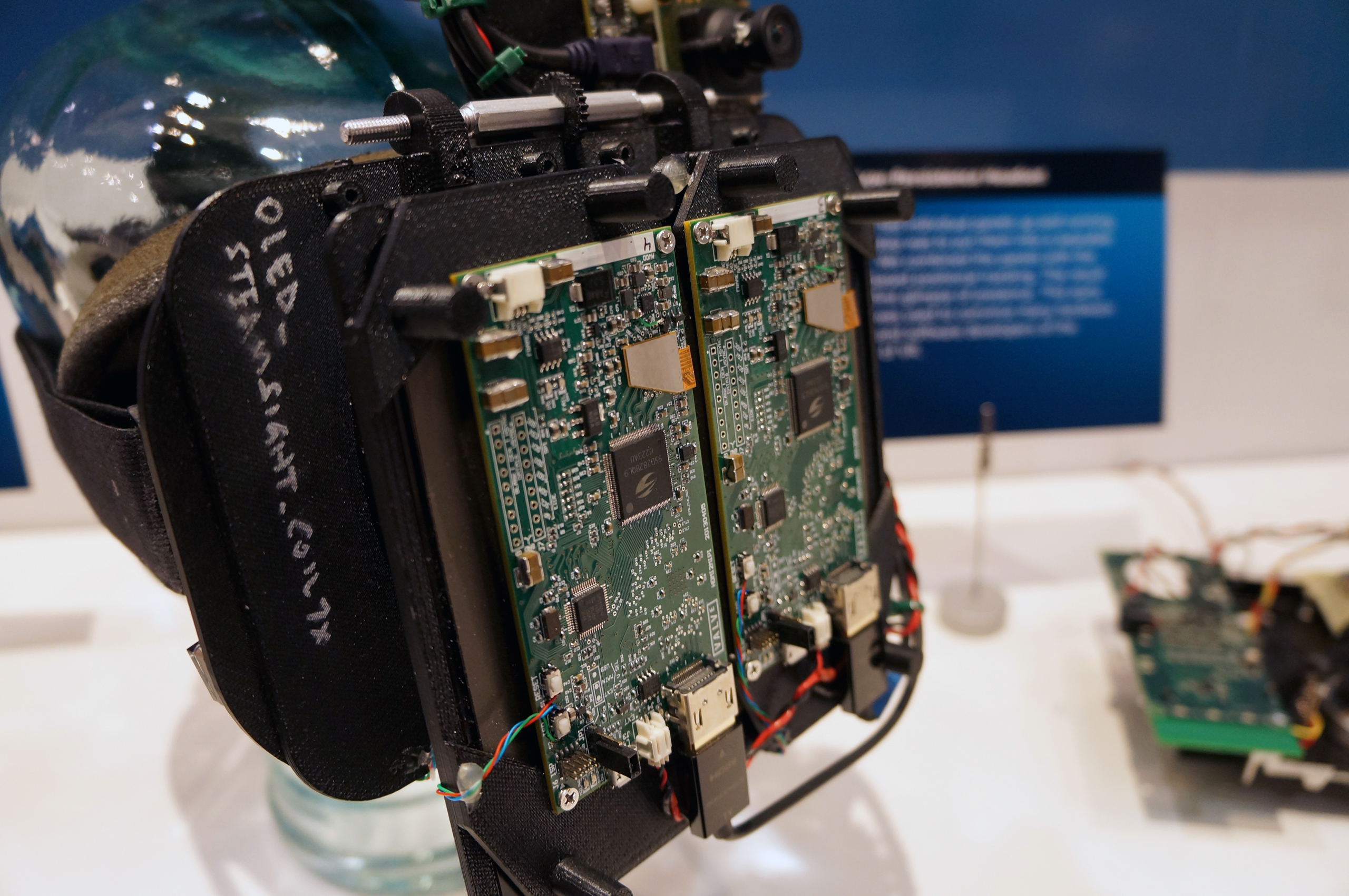
Valve's VR headset is the best one we've used yet, thanks to its laser-based positional tracking system and great VR controllers. Naturally, the hardware we tried was hardly Valve's first stab at virtual reality. In fact, Valve's GDC demo room included a display of prototype VR hardware stretching back to 2011 or so.
The display included three early headset prototypes and multiple different tracking solutions along a development timeline leading up to the debut of SteamVR. I chatted with Valve engineer Dan Newell about each prototype, how it came about, and what Valve learned from it. My favorite is the early laser emitting system, which Valve hacked together from a pair of old hard drives.
Here's a look at Valve's VR development timeline, from rough prototypes to the headset we tried on during GDC.
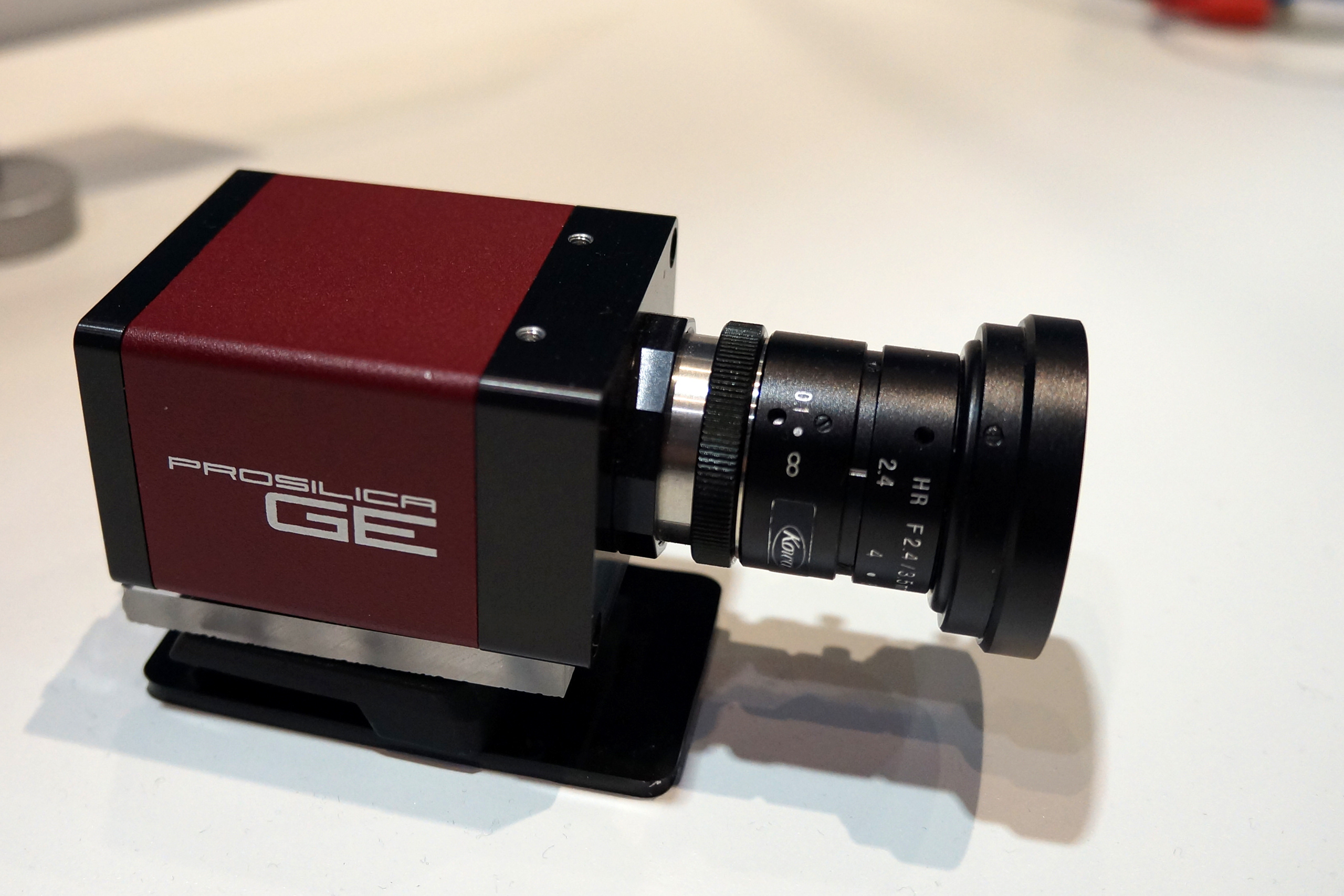
Fiducial-based positional tracking camera
Early in their VR experimentation, Valve's engineers were trying out different tracking systems. One path they explored was using machine vision cameras like the Prosilica GE. Cameras like these would be mounted on the VR headset, and look out into the room to spot the QR code-esque fiducial markers arranged on the walls. Valve used those fiducial markers and machine vision cameras for its "Room" demo.
Here's a picture of its VR room from Steam Dev Days.
The high-framerate machine vision cameras would identify the shapes and edges of the markers, and use that information to compute position and orientation for the headset. But there were problems with this system. The camera pictured here is too large to realistically fit to a consumer headset. More importantly, machine vision cameras can still cost hundreds or thousands of dollars, too much for a consumer VR product.
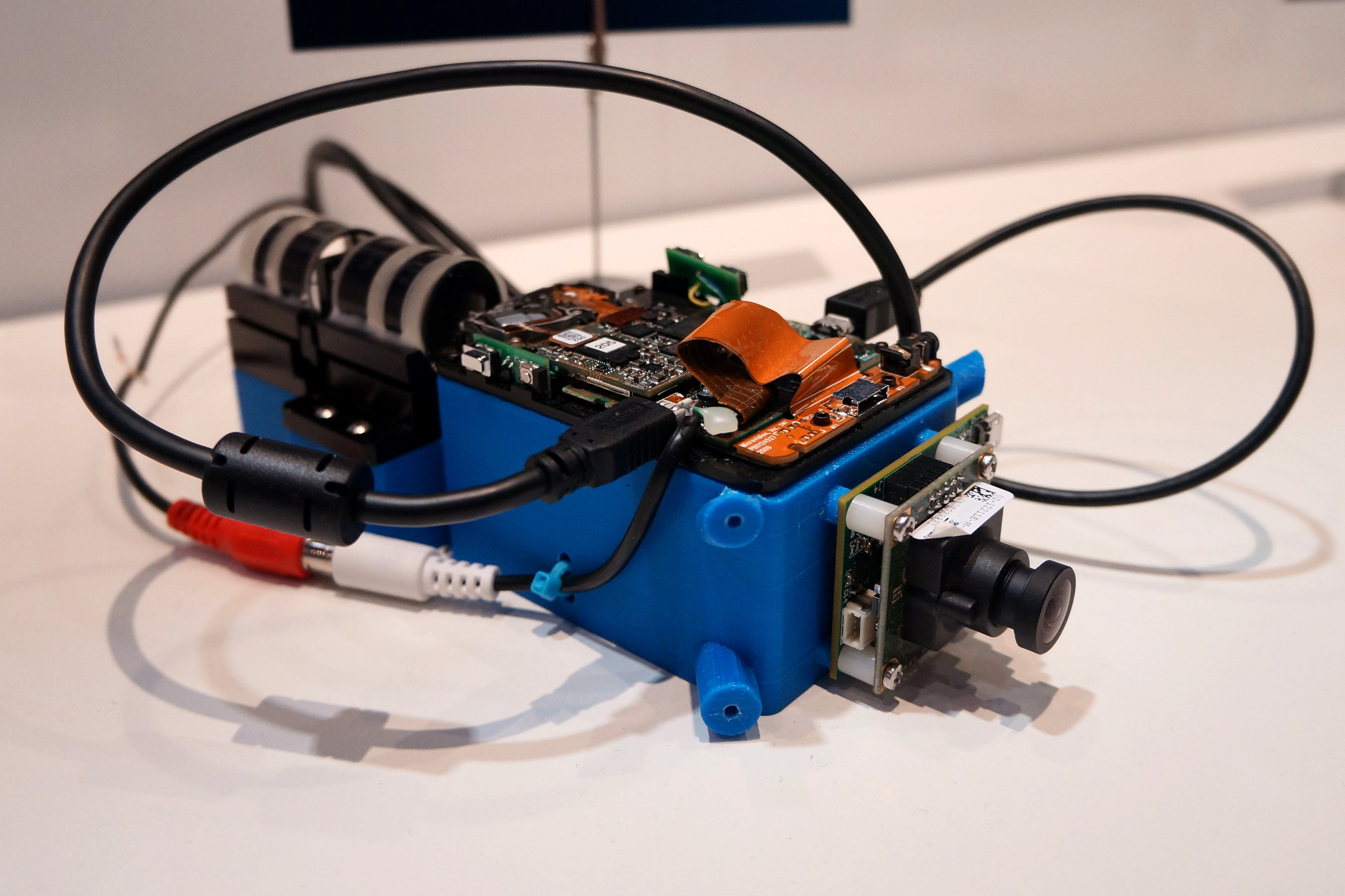
Telescope low-persistence prototype
This one sounds like a VR aficionado's wet dream. This system paired a machine vision camera (using the same fiducial tracking) with a tube you'd look through to view a display. You can see the tube in the back, with the circuitry housed up front. This model was for a single eye.
According to Valve's description, this system was incredibly low latency—four milliseconds from motion to photons. In other words, completely imperceptible latency. Valve's descriptive card states "the visual effect was that of looking through an empty tube at a different three-dimensional space."
Engineer Dan Newell described it as the most convincing VR experience Valve developed.In terms of movement, at least, it was practically indistinguishable from reality. Convincing, but you can look at the technology and guess it wasn't ideal for a gaming-focused VR headset. Valve's current display choice offers a far more expansive field of view.
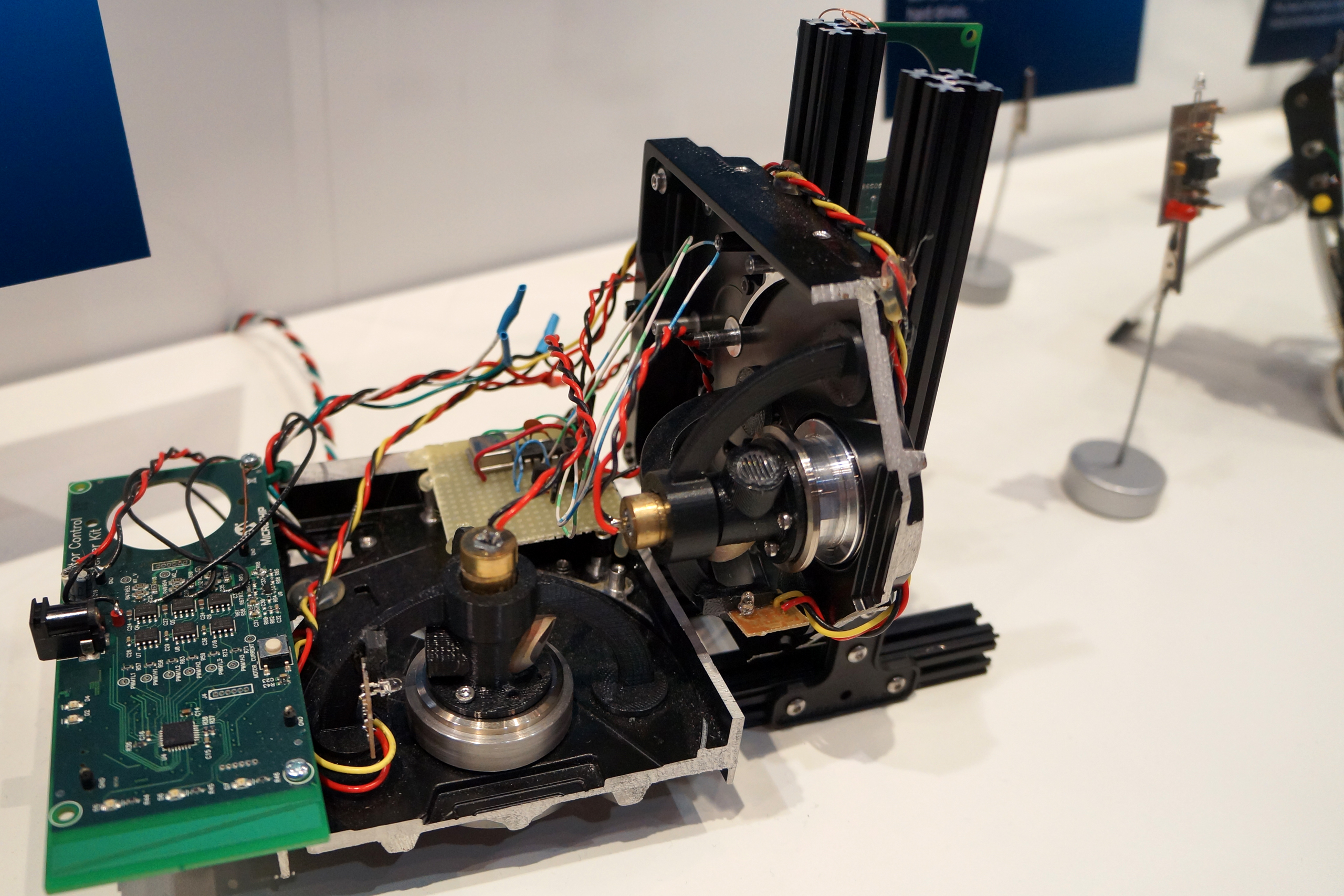
Early laser tracking base station
Valve's engineers obviously have some hardware hacking chops. This is a rough and dirty early version of the laser tracking system Valve is now using for precise positional tracking. This prototype is assembled from two mechanical spinning disk hard drives. You can still see the frames.
According to Newell, the silver cylinders, which were originally used to spin the hard drive platters, are here used to scatter the lasers throughout the room. This was Valve's first experiment with positional tracking from the outside looking in, as compared to the fiducial tracking system, which used a camera mounted on the headset to look out at the walls of a room.
Valve would experiment with another inward-facing tracking solution on the following pages, but came back to lasers for their accuracy and cost.
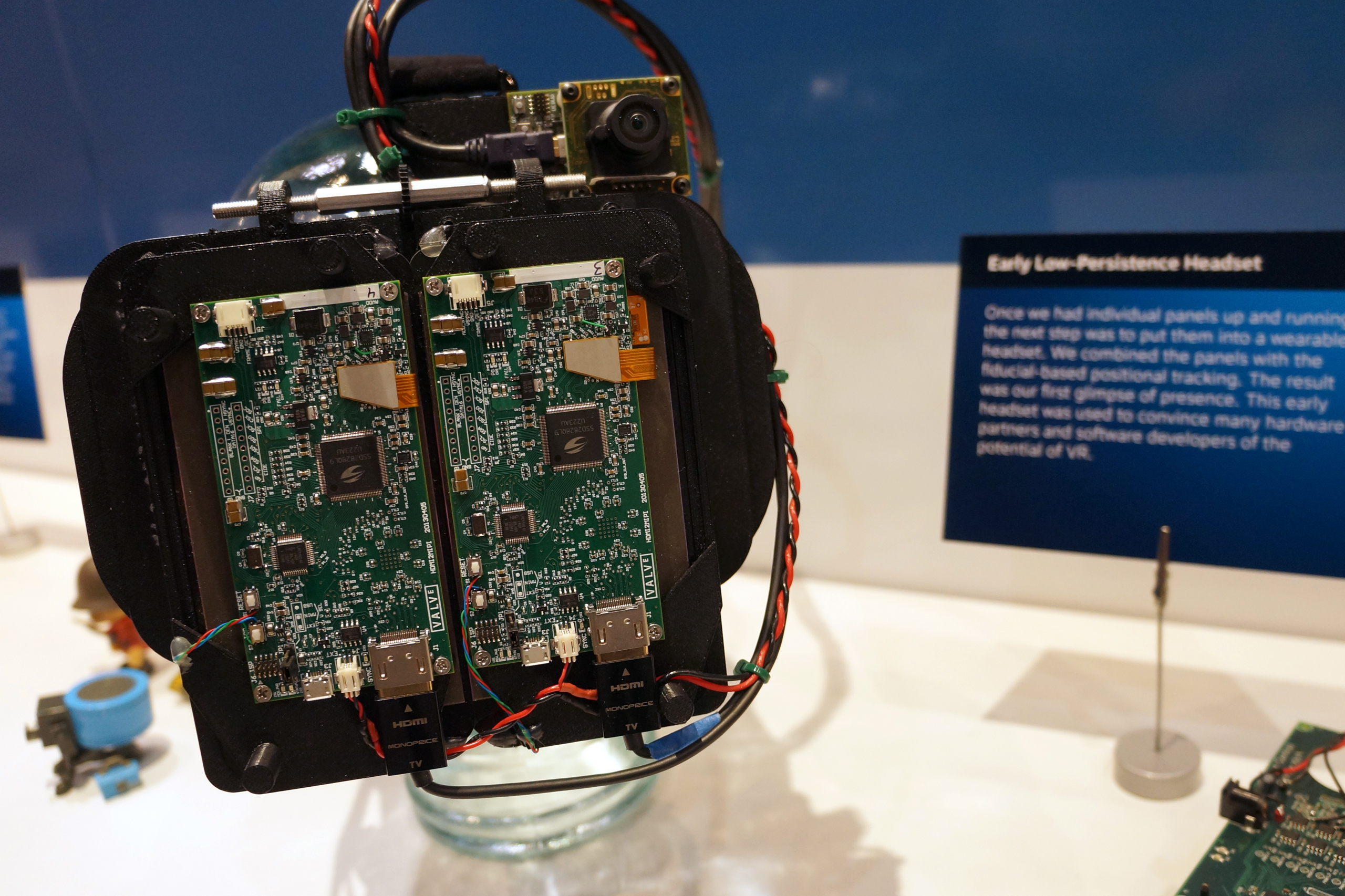
Early low-persistence headset
An early prototype VR headset, using two AMOLED smartphone displays. Like Valve's current headset, this model actually has a widescreen (something approaching 16:9) aspect ratio. Only the top half of each phone screen pictured here was being used. Valve designed custom circuit boards to control the output to the screens, and as Newell explained, had to work around issues affecting refresh rate and other byproducts of hacking the displays.
The vertical orientation of the two paired screens explains why this headset prototype (and the one on the next page) are unusually tall. When Valve partnered with HTC, the engineers were able to get custom panels that fit the headset's intended aspect ratio.
Valve used this headset in tandem with its fiducial tracking system, as you can see from the attached machine vision camera up top.
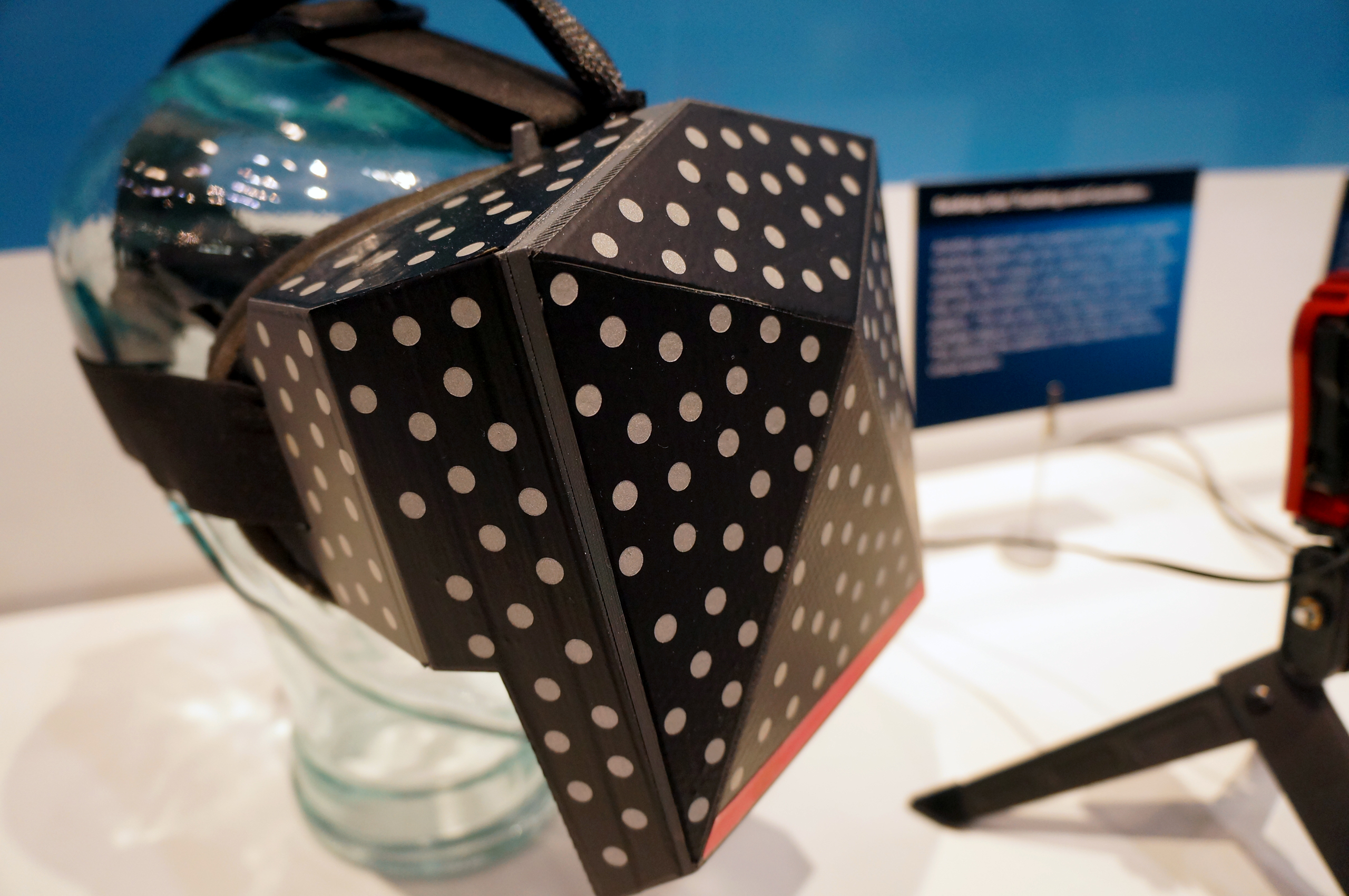
Dot tracking headset prototype
When Valve moved past fiducial tracking, its engineers experimented with dot tracking. The same headset you saw on the last page was covered in this polka dot material and paired with a stationary desktop machine vision camera. The camera could analyze a precise pattern to determine the position and orientation of the headset.
Newell noted a major issue with this system was price: the material used for this polka dot pattern was very expensive.
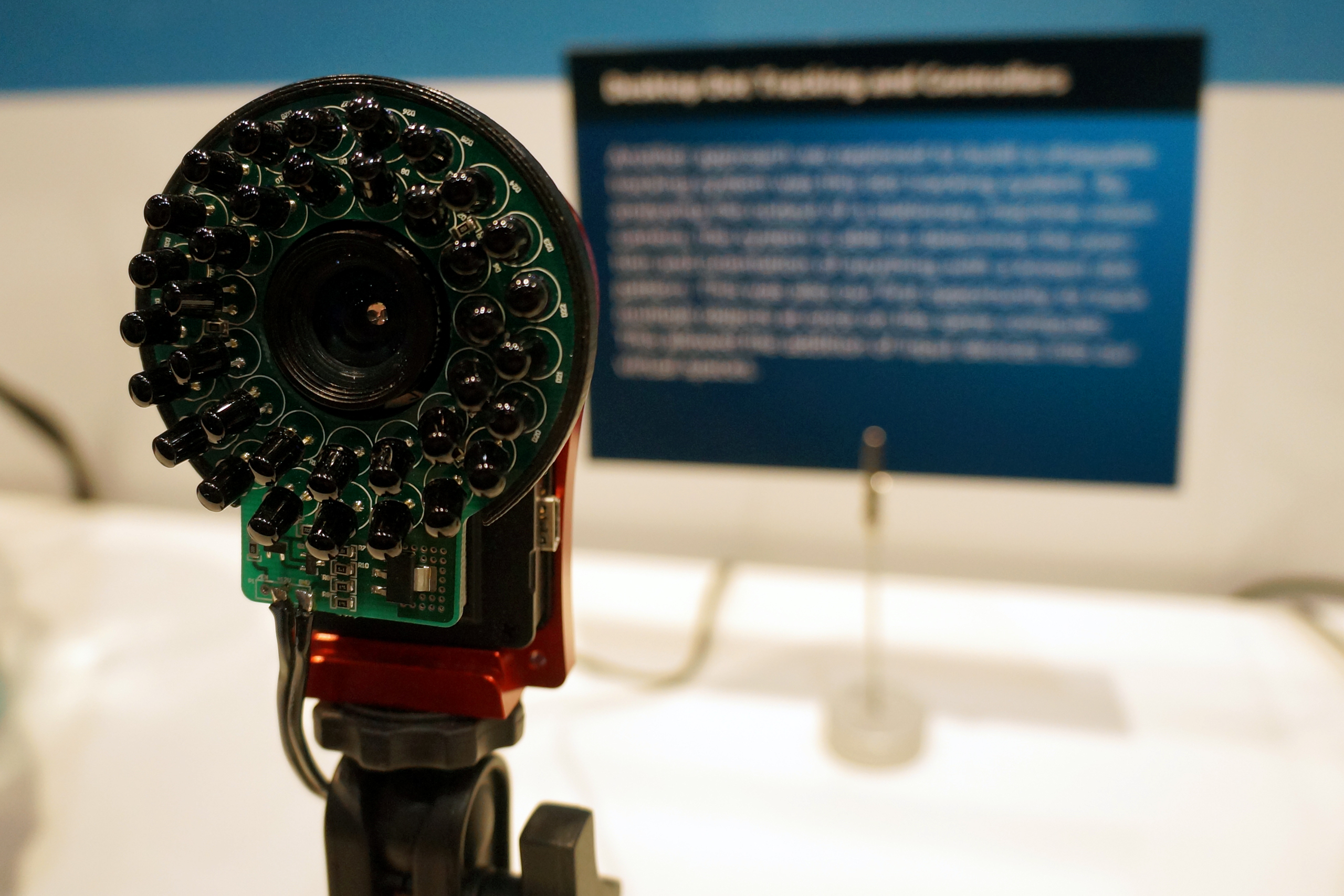
Desktop dot tracking camera
The machine vision camera used in conjunction with the dot tracking headset. Valve's description notes that this camera was its first opportunity to track multiple objects at once on the same computer. Remember, the tracking system used in the "Room" demo looked outward to judge positioning based on the fiducial marks on the walls. With that system, there was no way to track a hand-held controller. With the dot tracking system, Valve started experimenting with that as well.
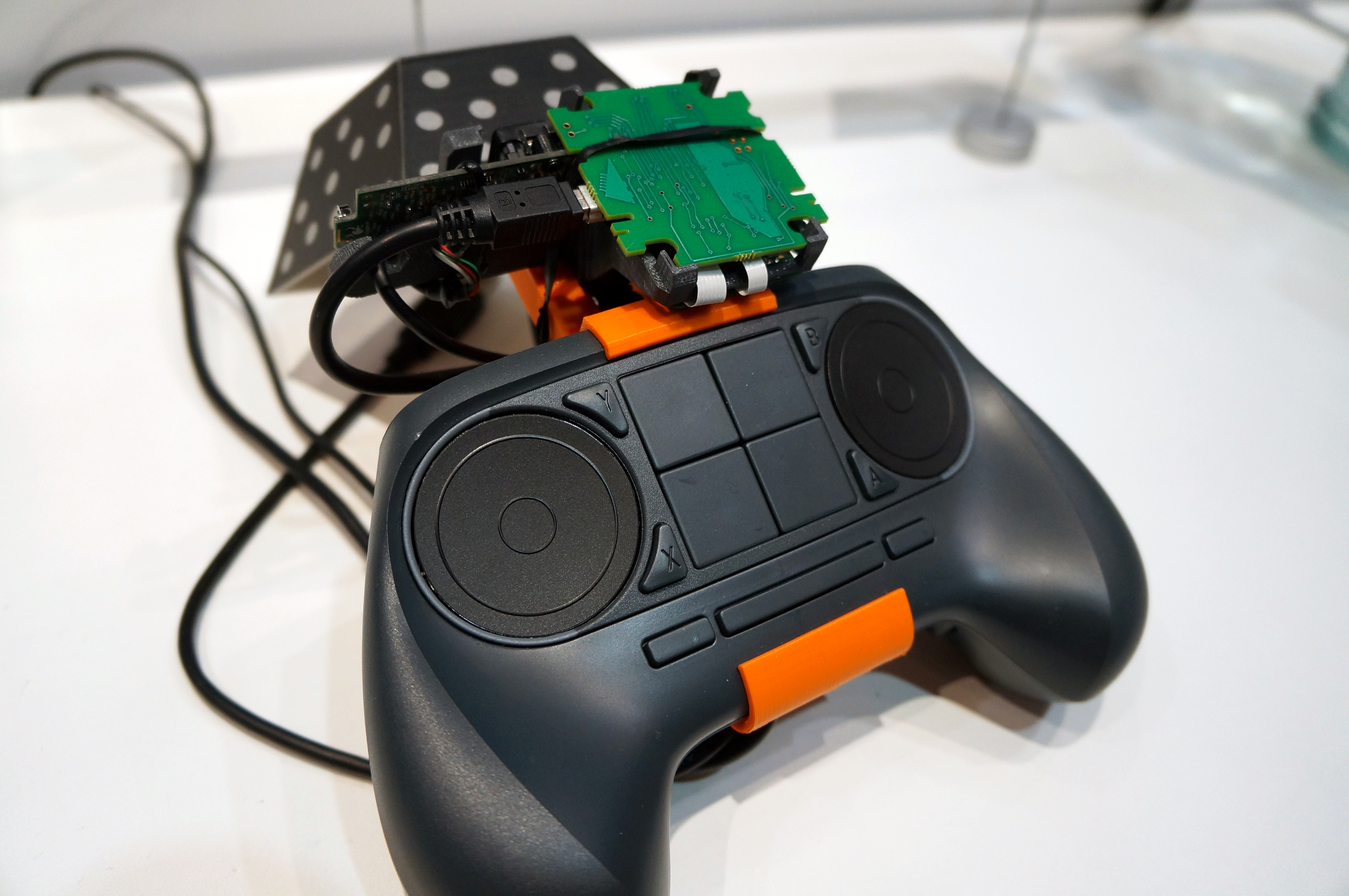
Steam controller with dot tracking
In this crude mockup, an early Steam controller has a dot pattern material mounted to it. Crude, but effective for tracking the position of the controller in 3D space alongside the headset.
Again, though, price was an issue for using this material, and the desktop tracking camera may have had a limited FOV compared to the laser system Valve's using now.
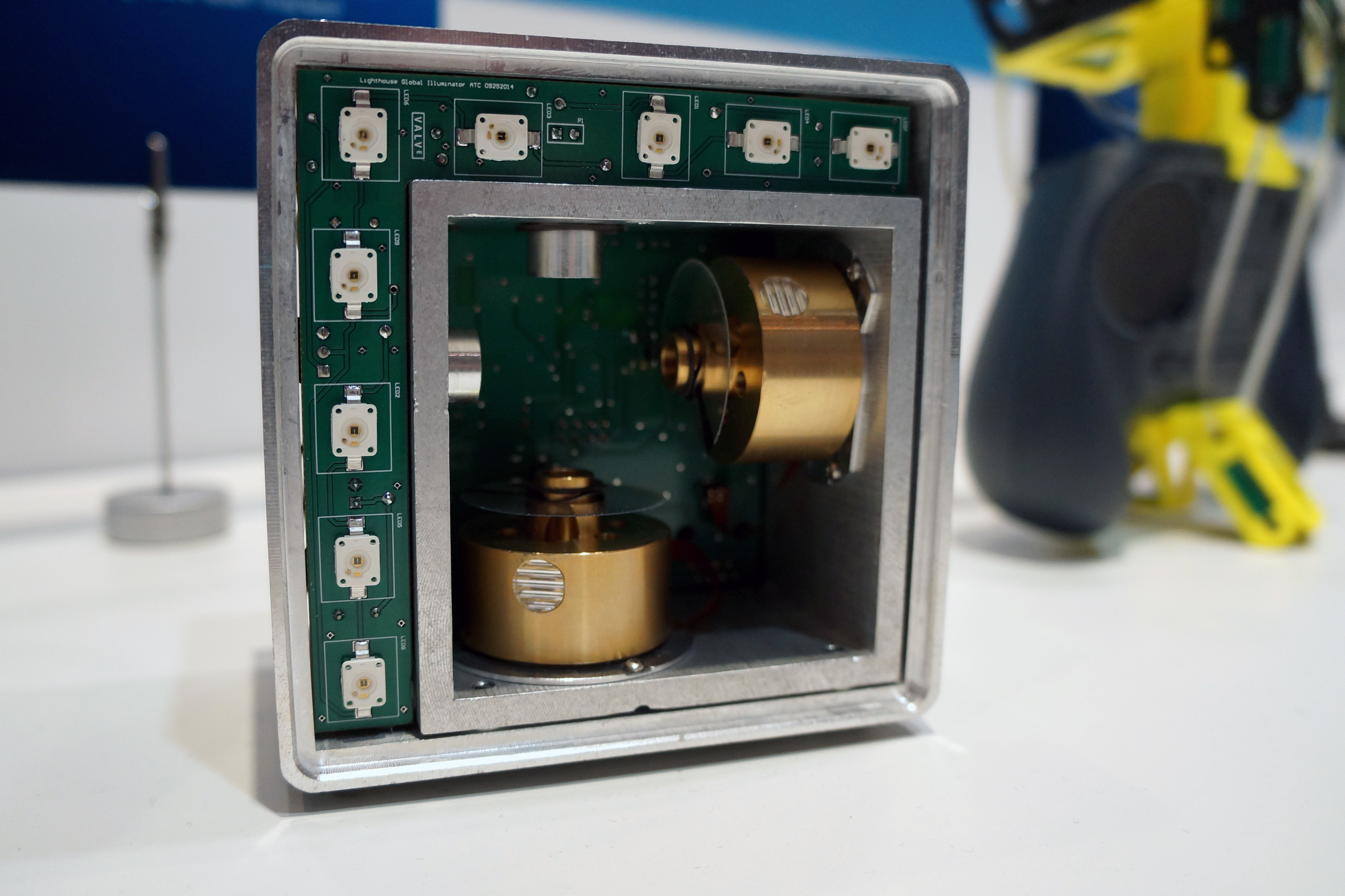
Laser-tracked headset emitter
A more refined version of Valve's laser-emitting base station. It fires out lasers to scan a room. Those lasers come into contact with the headset, and the timing of that contact tells Valve everything. Some complicated math can be used to determine the exact positioning of the headset.
While many of the prototypes were assembled by hand, Newell told me that Valve got its laser base stations far enough into development to get some manufactured. With more of these emitters around the office, they could test a wide range of VR setups more efficiently.
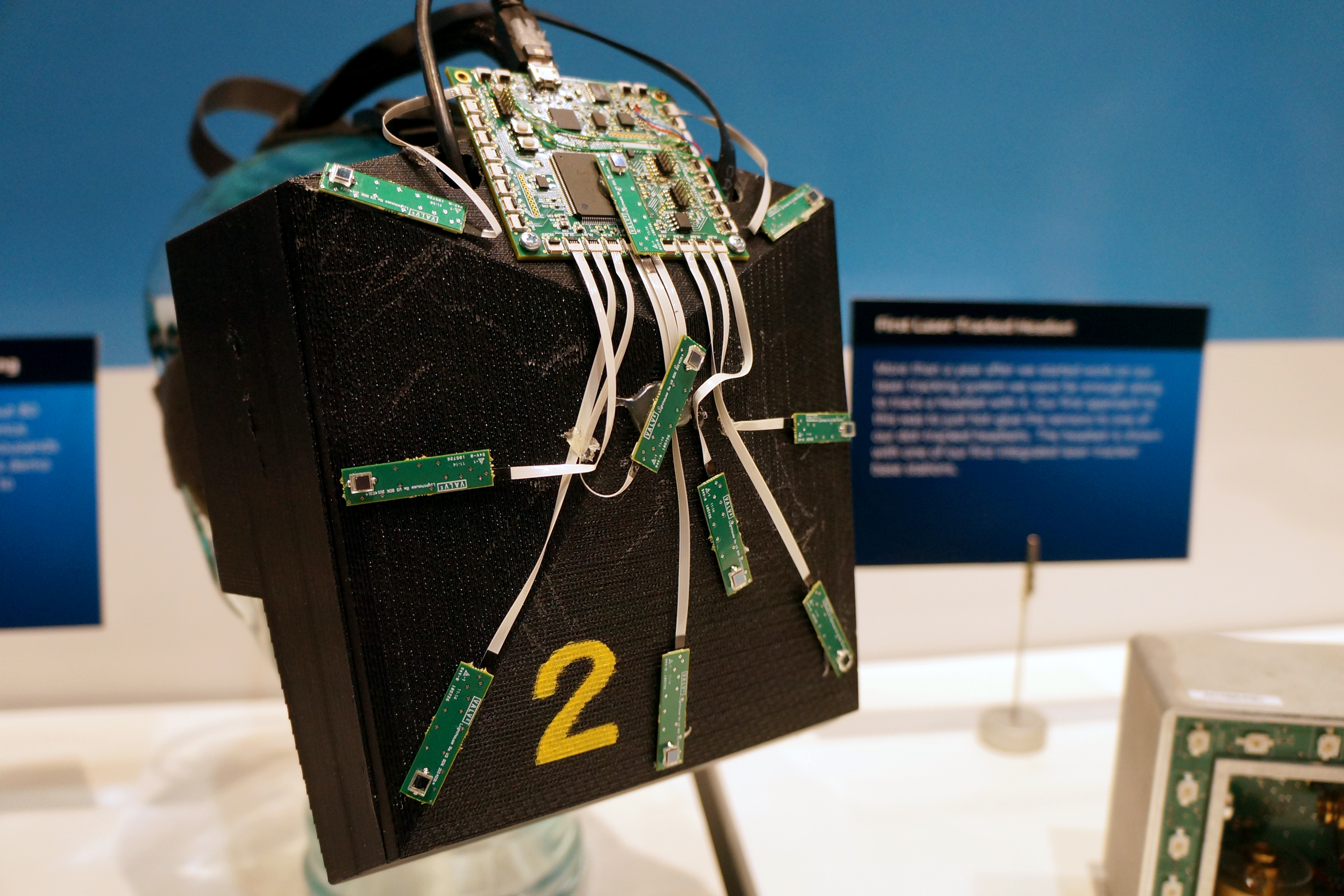
First laser-tracked headset
Strip the polka dot pattern off the headset a few pages pack and rig it up with sensors, and this is what you get. It took more than a year of work on laser tracking for Valve to get to this point. The sensors were simply glued to the prototype headset and connected to the circuit board on top. You can see the end results of this early prototype work in the model Valve was demoing at GDC.
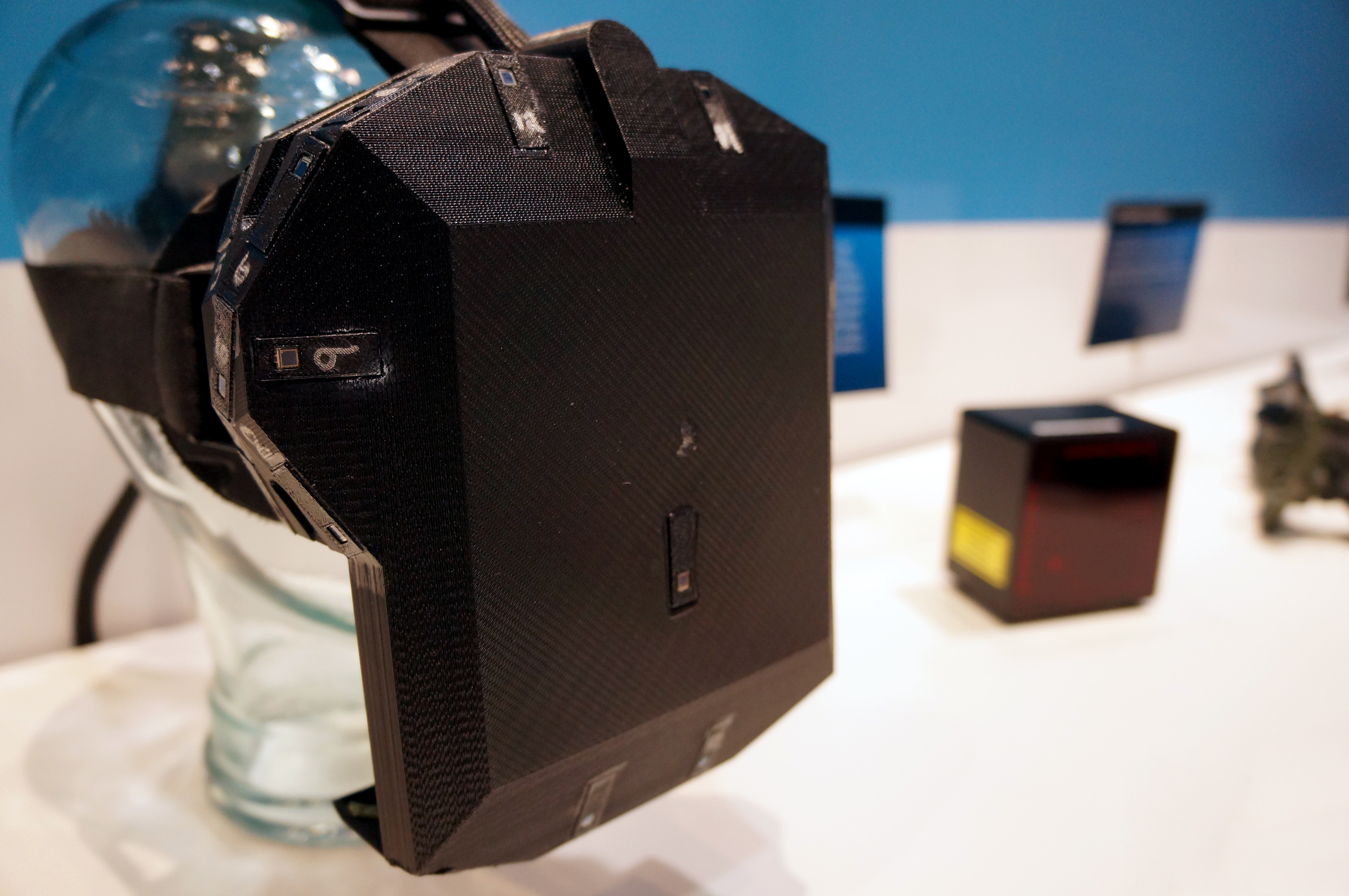
V minus-1 headset
This headset is essentially a more refined version of the model on the last page. The sensors are now fitted into the chassis, but the body is still the same, and no major changes were made between the two models. This one was good enough for Valve to build multiple units of, and was the development hardware most of Valve's partners used to build demo content for GDC.
The headset we wore at GDC, built in collaboration with HTC, was version zero. This headset, then, was version minus-1.
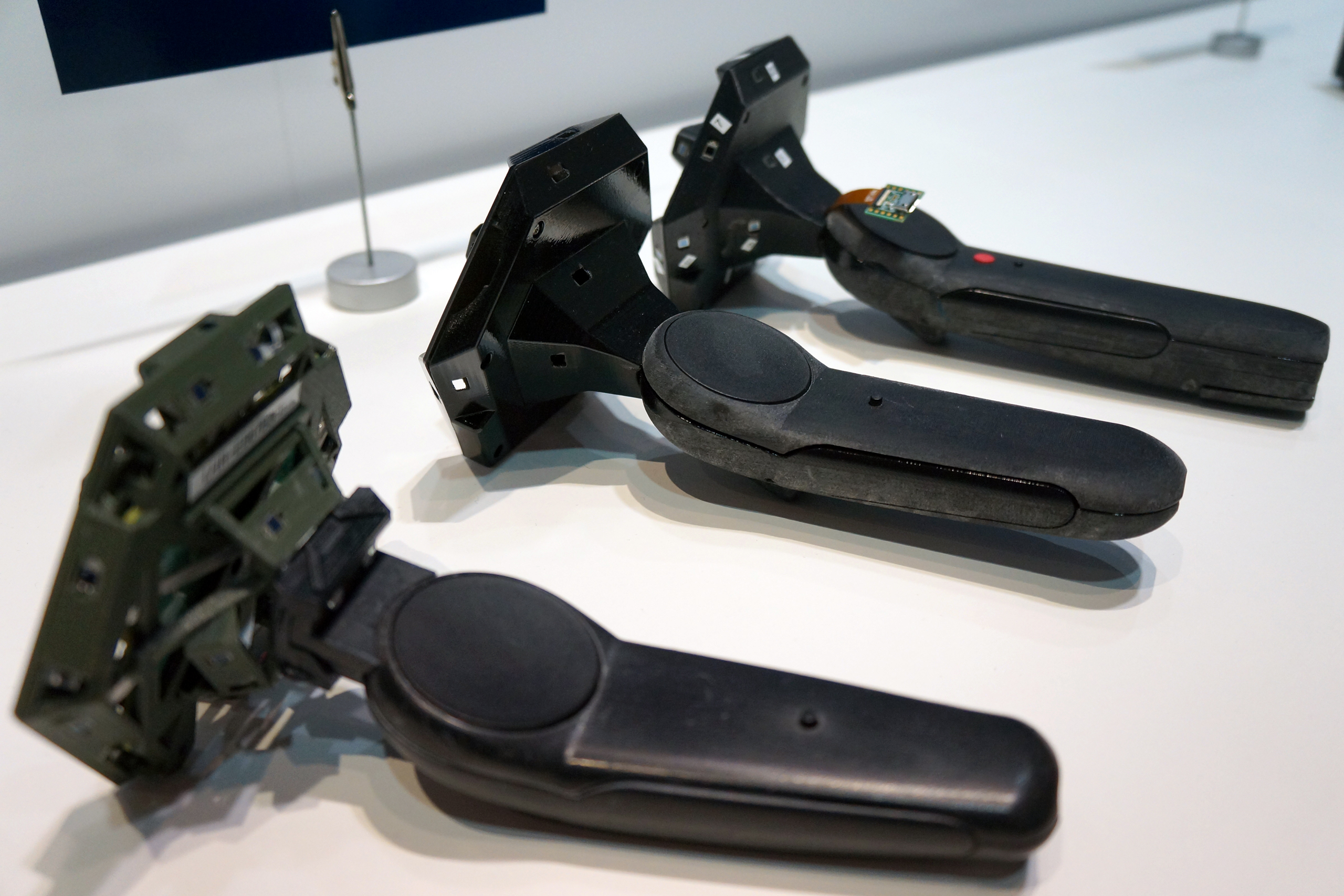
Steam VR controllers
Three prototype iterations of Valve's VR controller. The satellite-shaped array on top of the controller houses the laser sensors. While prototyping that array, Valve produced several models with 3D printers.
On these three controllers, you can see changes to the placement of the controller's side grips, trigger, and the addition of a face button on the third model.
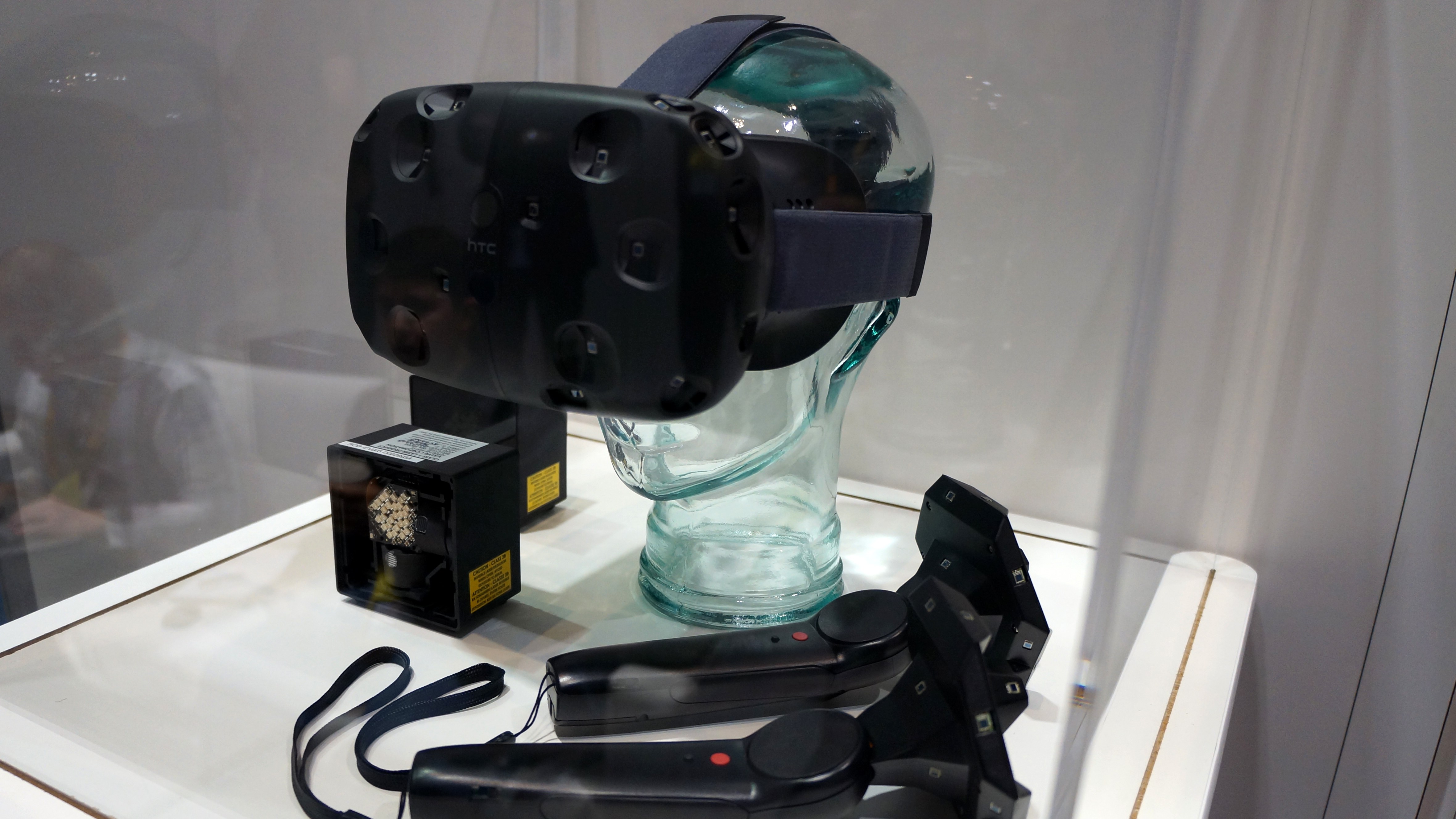
SteamVR version zero
And here we are: version zero, also known as SteamVR or the HTC Vive. Also pictured are refined VR controllers and a smaller, better-performing laser emitter. This is the headset Valve will be shipping out to developers this spring. The consumer version we get in November will likely be very similar.
That's it for Valve's VR display at GDC. Look out for more on SteamVR as soon as we can get our hands (and faces) on another headset.

Wes has been covering games and hardware for more than 10 years, first at tech sites like The Wirecutter and Tested before joining the PC Gamer team in 2014. Wes plays a little bit of everything, but he'll always jump at the chance to cover emulation and Japanese games.
When he's not obsessively optimizing and re-optimizing a tangle of conveyor belts in Satisfactory (it's really becoming a problem), he's probably playing a 20-year-old Final Fantasy or some opaque ASCII roguelike. With a focus on writing and editing features, he seeks out personal stories and in-depth histories from the corners of PC gaming and its niche communities. 50% pizza by volume (deep dish, to be specific).

